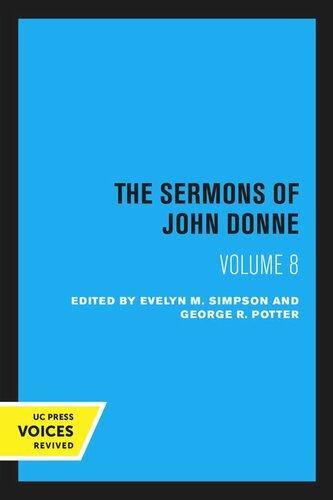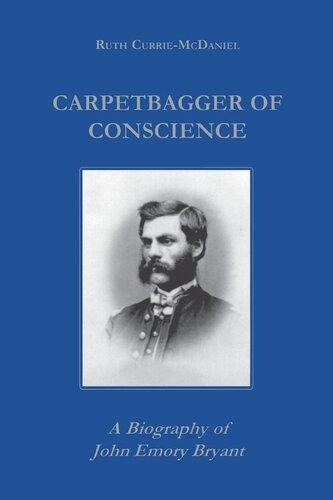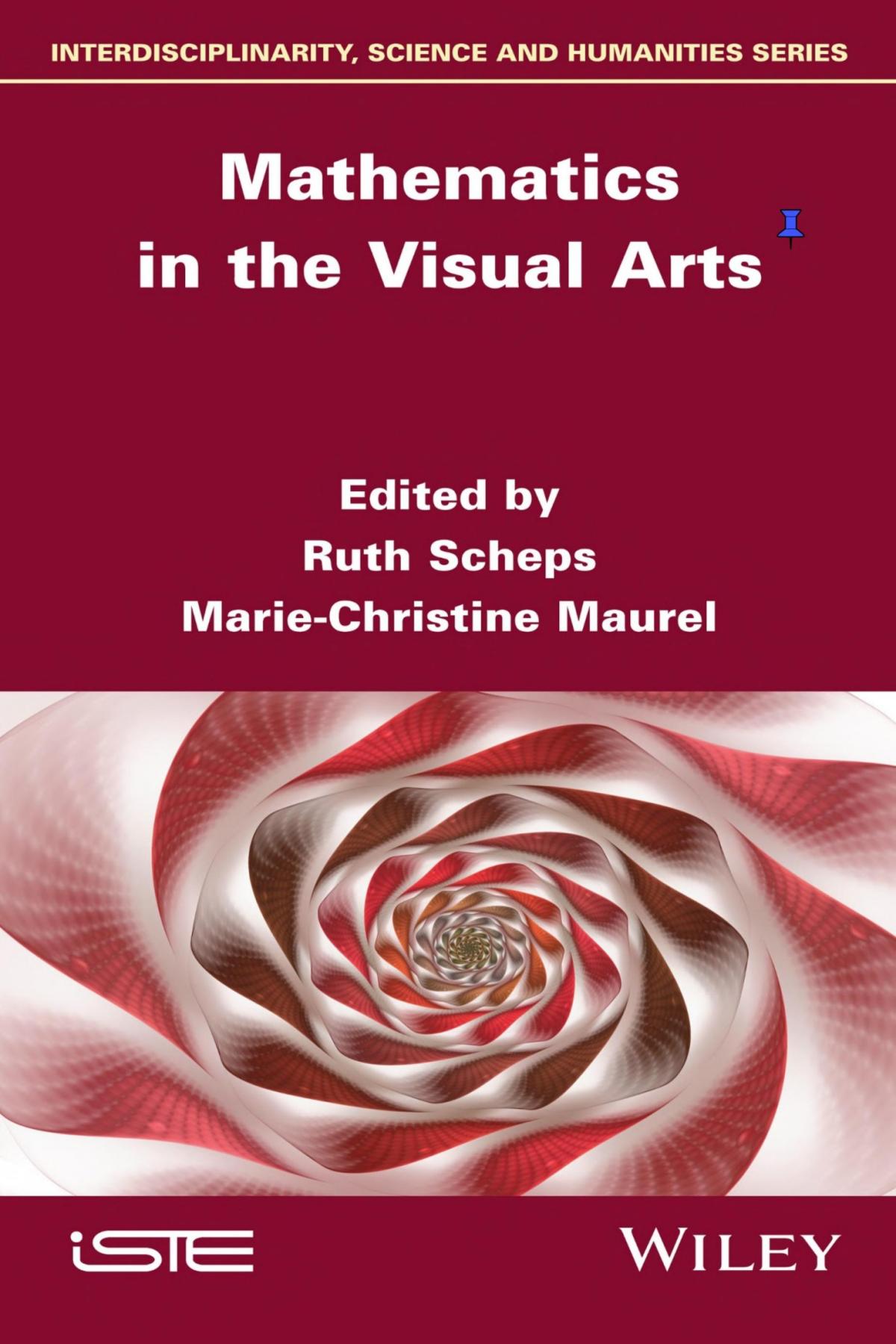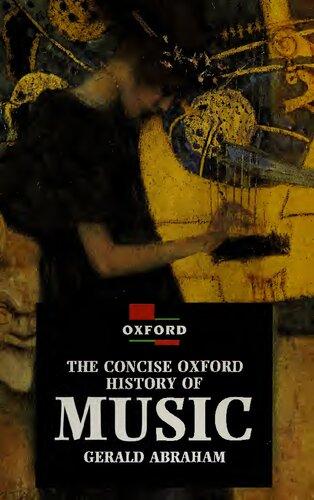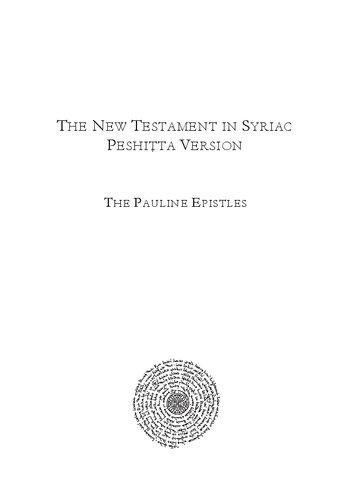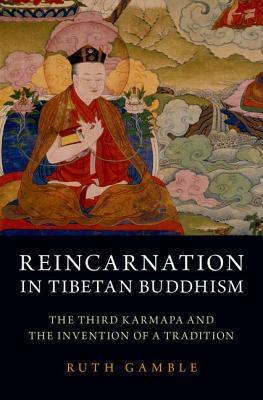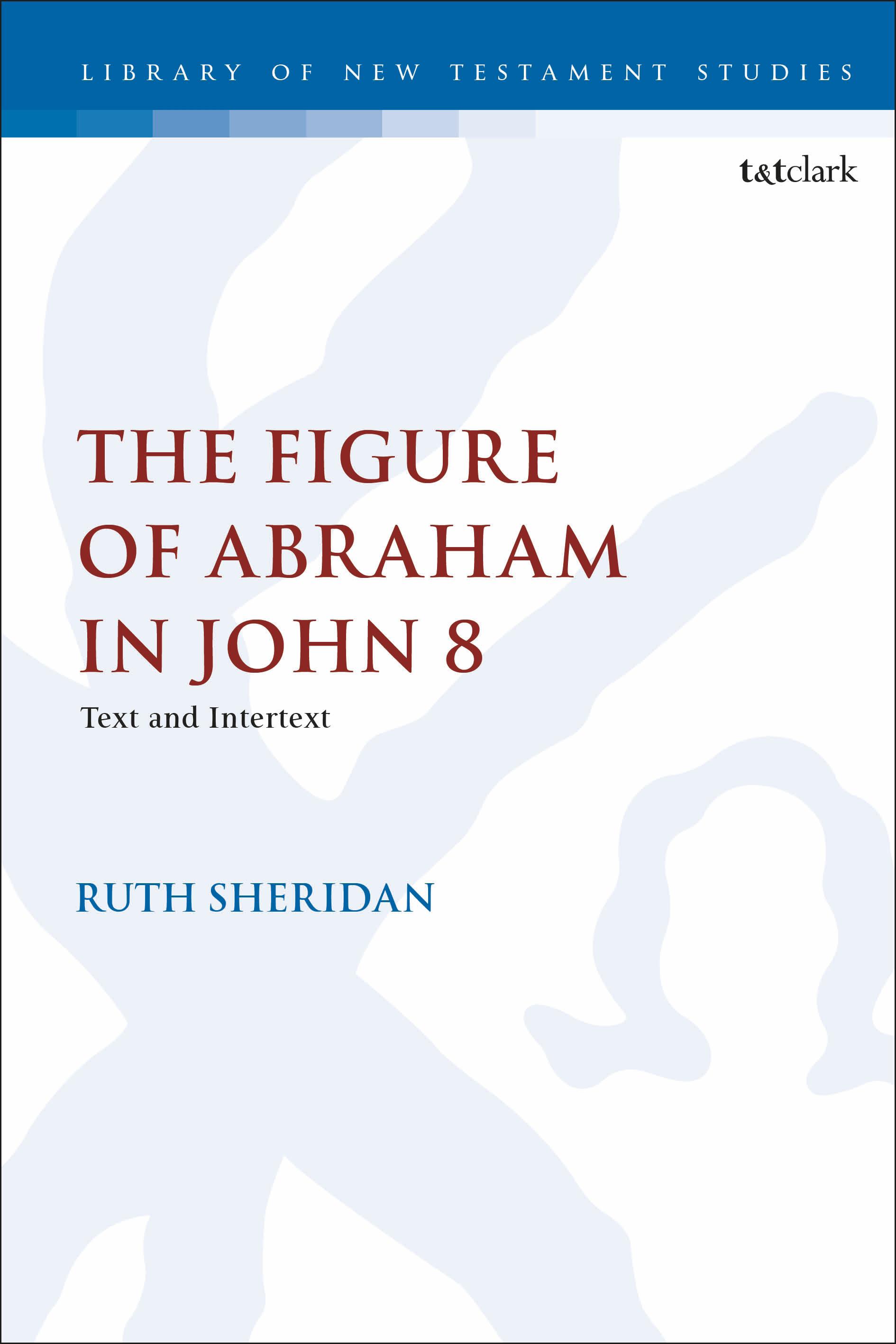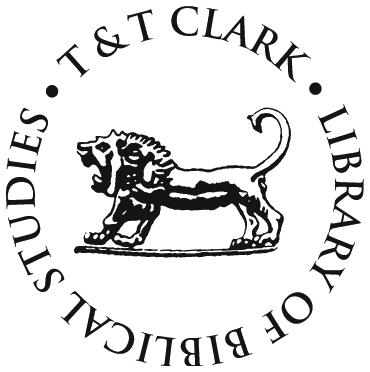Acknowledgements
The research and writing undertaken for this book was made possible by a generous postdoctoral research fellowship at Charles Sturt University, Australia (2012–15). I am particularly thankful to Professor Gerard Moore, who mentored the project and supported me throughout the whole journey, and to Dr Karl Hand for his research assistance in the early years of this book.
Thanks also to Professor Mark Goodacre and Professor Chris Keith for their editorial guidance and enthusiasm for my project from 2011 onwards. Both were supportive and patient as the book required additional time to gestate and come to completion, through many unexpected twists and turns in my personal life. At times, I thought this book would never see the light of day; I thank everyone in my life, my family, friends and colleagues (now at Western Sydney University), who believed I could persevere.
Along the way came my daughter Sarah, born on Rosh Hashanah 5776 (2015), the greatest gift from above. To her, and my beautiful son Jamie, I dedicate this book, with love.
AB Anchor Bible
Abbreviations
ABR Australian Biblical Review
AEJT Australian E-Journal of Theology
AHR American Historical Review
AJEC Ancient Judaism and Early Christianity
AJSR Association of Jewish Studies Review
ANE Ancient Near East
ATANT Abhandlungen zur Theologie des Alten und Neuen Testaments
BAR Biblical Archaeology Review
BBR Bulletin for Biblical Research
BCE Before the Common Era
BDAG A Greek-English Lexicon of the New Testament and Other Early Christian Literature
BDB Brown–Drivers–Briggs
BETL Bibliotheca Ephemeridum Theologicarum Lovaniensium
BHS Biblia Hebraica Stuttgartensia
Bib Biblica
BibInt Biblical Interpretation
BINS Biblical Interpretation Series
BJRL Bulletin of the John Rylands University Library of Manchester
BN Biblische Notizen
BTB Biblical Theology Bulletin
BSac Bibliotheca sacra
BZ Biblische Zeitschrift
BZAW Beihefte zur Zeitschrift für die altestamentliche Wissenschaft
BZNW Beihefte zur Zeitschrift für die neutestamentliche Wissenschaft
CBET Contributions to Biblical Exegesis and Theology
CBR Currents in Biblical Theology
CBQ Catholic Biblical Quarterly
Abbreviations
CD Damascus Code
CE Common Era
CI Critical Inquiry
CRINT Compendia rerum iudaicarum ad Novum Testamentum
DJD Discoveries in the Judean Desert
DSD Dead Sea Discoveries
DSS Dead Sea Scrolls
EH Europäische Hochschulschriften
ELH English Literary History
ETL Ephemerides Theologicae Lovanienses
EvQ Evangelical Quarterly
ExpTim Expository Times
FAT Forschungen zum Alten Testaments
HB Hebrew Bible
HBT Horizons in Biblical Theology
HNT Handbuch zum Neun Testament
HTR Harvard Theological Review
HUCA Hebrew Union College Annual
ICC International Critical Commentary
Int Interpretation
JAAR Journal of the American Academy of Religion
JBL Journal of Biblical Literature
JECS Journal of Early Christian Studies
JETS Journal of the Evangelical Theological Society
JHS Journal of Hebrew Scriptures
JoSt Johannine Studies
JPS Jewish Publication Society
JQR Jewish Quarterly Review
JSNT Journal for the Study of the New Testament
JSNTSup Journal for the Study of the New Testament – Supplement Series
JSOTSup Journal for the Study of the Old Testament – Supplement Series
JSJ Journal for the Study of Judaism
JSJS Journal for the Study of Judaism Supplements
JSP Journal for the Study of the Pseudepigrapha
Abbreviations
JSPSup Journal for the Study of the Pseudepigrapha Supplements
JTS Journal of Theological Studies
LCL Loeb Classical Library
LNTS Library of New Testament Studies
LSTS Library of Second Temple Studies
LXX Septuagint
MLN Modern Language Notes
MLQ Modern Language Quarterly
MSS Manuscripts
MT Masoretic Text
MTZ Münehner Theologische Zeitschfrift
NA28 Nestle-Aland, Novum Testamentum Graece
NBC New Biblical Commentary
NCBC New Century Bible Commentary
NICOT New International Commentary on the Old Testament
NLH New Literary History
NovT Novum Testamentum
NovTSup Novum Testamentum, Supplements
NRSV New Revised Standard Version
NT New Testament
NTAbh Neutestamentliche Abhandlungen
NTL New Testament Library
NTS New Testament Studies
OT Old Testament
OTL Old Testament Library
ÖTKNT Ökumenischer Taschenbuchkommentar zum Neuen Testament
OTP Old Testament Pseudepigrapha
PAAJR Proceedings of the American Academy for Jewish Research
Pac Pacifica
PBN Paternoster Biblical Monographs
PL Patrologia Latina
PMLA Proceedings of the Modern Language Association
PNTC Pillar New Testament Commentary
RevExp Review and Expositor
RB Revue biblique
Abbreviations
RBS Resources for Biblical Studies
RevQ Revue de Qumran
SANt Studia Asrhusiana Neotestamentica
SBL Society of Biblical Literature
SBLDS Society of Biblical Literature Dissertation Series
SBLMS Society of Biblical Literature Monograph Series
Sem Semeia
SJT Scottish Journal of Theology
SNTSMS Society of New Testament Studies Monograph Series
SP Sacra Pagina
SSEJC Studies in Scripture in Early Judaism and Christianity
Str-B Kommentar zum Neuen Testament aus Talmud und Midrash. Edited by Herman L. Strack and Paul Billerbeck. 6 vols. Münich, 1922–1961.
StudBibLit Studies in Biblical Literature
StPhAnnual Studia Philonica Annual
SupJSJ Supplements to the Journal for the Study of Judaism
T12P Testaments of the Twelve Patriarchs
TBN Themes in Biblical Narrative
TrinJ Trinity Journal
TPAPA Transactions and Proceedings of the American Philological Association
TSAJ Texts and Studies in Ancient Judaism
TVZ Theologischer Verlag Zürich
TynBull Tyndale Bulletin
VC Vigiliae Christianae
VT Vetus Testamentum
VTSupp Vetus Testamentum Supplements
WBC Word Biblical Commentary
WUNT Wissenschaftliche Untersuchungen zum Neuen Testament
ZBK Zürcher Bibelkommentare
ZNW Zeitschrift für die neuentestamentliche Wissenschaft und die Kunde der älteren Kirche
ZThK Zeitschrift für Theologie und Kirche
Introduction
John 8.31-59 is recognized in the scholarship for two defining features: first, as a distinct literary unit, it is often cited as the locus classicus of New Testament (NT) anti-Judaism; and second, it is the only section of John’s Gospel to refer to the biblical figure of Abraham.1 The so-called anti-Jewish dimension of John 8.31-59 appears to be most evident in Jesus’ various vituperative statements aimed at a group of characters bluntly designated ‘the Jews’ – for example, in the heat of the debate, Jesus tells this group that they have the devil as their ‘father’, and that they do his ‘works’ (8.44).2 Jesus also accuses the Jews of being ‘slaves of sin’, and that they are due to be removed from the ‘household’ of God (8.34-36). Indeed, the larger literary unit framing the text –narratively speaking, the festival setting of Sukkot (7.1–8.59) – is filled with tense, vituperative dialogue, with no reprieve and with a drastic conclusion.
At the same time, both Jesus and the Jews make repeated reference to the figure of Abraham in John 8.31-59. Outside of this pericope, Abraham does not appear at all in the Johannine corpus; in ch. 8 vv. 31-59, he is referred to twelve times in connection with three contextual traditions: his role as ‘father’ or progenitor, his exemplary ‘works’ and his prescient ability to ‘see’ and ‘rejoice’ in Jesus’ ‘day’ (8.33, 37, 39 (×3), 40, 52, 53, 56, 57, 58). Each reference to Abraham embroils Jesus and the Jews in deeper polemical disputation: against Jesus’ invitation to ‘abide’ in his ‘word’ and so to become ‘free’, the
1 A detailed case for reading John 8.31-59 as a discrete literary unit is made in Chapter 3. Suffice it to note here that the parameters of the unit are disputed in the scholarship based on the fact that the audience(s) addressed by Jesus in ch. 8 vv. 30 and 31 can appear to be either merged or distinct.
2 Numerous scholars consider this verse to be the nadir of New Testament anti-Jewish diatribe, both of itself and seen from within the remit of its reception history; for example Jürgen Becker, Das Evangelium nach Johannes (ÖTKNT 4/1 and 4/2; 2 vols.; Gütersloh-Würzburg: Mohn, 1985), p. 304; Reimund Bieringer, Didier Pollefeyt and Frederique Vandecasteele-Vanneuville, ‘Wrestling with Johannine Anti-Judaism: A Hermeneutical Framework for the Current Debate’, in Bieringer, Pollefeyt and Vandecasteele-Vanneuville (eds), Anti-Judaism and the Fourth Gospel: Papers from the Leuven Colloquium (Louisville: Westminster/John Knox, 2001), pp. 3–37, at p. 14; Adele Reinhartz, Jesus of Hollywood (New York: Oxford University Press, 2009), p. 194. Some studies have attempted extended ‘contextualization’ of this verse, for example Stephen Motyer, Your Father the Devil? A New Approach to John and the Jews (Paternoster Biblical Monographs; UK: Paternoster Press, 1997); Urban C. von Wahlde, ‘“You are of Your Father the Devil” in Its Context: Stereotyped Apocalyptic Polemic in Jn 8:38-47’, in Reimund Bieringer, Didier Pollefeyt and Frederique VandecasteeleVanneuville (eds), Anti-Judaism and the Fourth Gospel: Papers from the Leuven Colloqium (Assen: Van Gorcum, 2001), pp. 437–48; Erich Gräßer, ‘Die antijüdische Polemik im Johannesevangelium’, NTS 11 (1964/5), pp. 74–90. On the reception history of this motif, see the widely cited work by Joshua Trachtenberg, The Devil and the Jews: The Medieval Conception of the Jew and Its Relation to Modern Anti-Semitism (Philadelphia: JPS; 2nd edn, 2002).
The Figure of Abraham in John 8
Jews claim to be ‘seed of Abraham’ and thus to be inherently un-enslaved (8.31-33). Jesus warns the Jews that although they are Abraham’s offspring, they are not children of Abraham, for they are murderous (8.37) and do not do Abraham’s ‘works’ (8.39-40). Ultimately, Jesus provocatively implies superiority to Abraham (8.53) on the basis of preexistence (8.58), and the fact that Abraham witnessed his ‘day’ (8.56). The Jews attempt to stone Jesus, but to no avail (8.59). It is worth asking why Abraham is repeatedly invoked in precisely this harsh section of the Gospel. What is the connection between the Gospel’s fierce rhetoric at this point and the intertextual evocation of Abraham?
The answer might seem, prima facie, rather obvious. After all, early Christian controversies typically invoked Israel’s great patriarch as a means of establishing their claims to a richly unique heritage: the one God’s covenant with his people.3 Such claims often indicated issues of central concern. As Samuel Sandmel expressed: ‘To see what the writer makes of Abraham is often to see most clearly what the writer has to say’.4 Tensions between Jesus and the Jews in John’s narrative run particularly high in John 8.31-59 when the figure of Abraham enters the fray, and the stakes are suddenly raised to a considerable degree. Recently, Tineke de Lange has claimed that Abraham’s ‘conspicuous’ and ‘sudden’ appearance in John 8.31-59 suggests that the issues at stake between Jesus and the Jews in this pericope reflected historical instances of Jewish–Christian disputation in the late first century CE.5 Abraham thus operated as an index to the socio-historical crisis facing the ‘Johannine community’ as it broke away from its ‘opponents’ – who are vilified in the text as ‘the Jews’.6 While it is not incorrect to read John 8.31-59 in this manner, the primary purpose of this book is not to uncover the possible historical reality behind the references to Abraham, nor to assess what the figure of Abraham in John 8.31-59 might reveal about the so-called ‘parting of the ways’ between the constructed ‘Johannine community’ and emergent Judaism.7 In particular, the theoretical premises underpinning the more simplistic examples of ‘two-level’ readings of John – such as an assumed one-on-one correspondence between literature and history – seem to me to be highly problematic.8
3 See the primary literature cited in Jeffrey Siker, Disinheriting the Jews: Abraham in Early Christian Controversy (Louisville: Westminster/John Knox, 1991).
4 Samuel Sandmel, Philo’s Place in Judaism: A Study of Conceptions of Abraham in Jewish Literature (Cincinnati: Hebrew Union College Press, 1956), p. 29.
5 Tineke de Lange, Abraham in John 8,31-59: His Significance in the Conflict Between Johannine Christianity and Its Jewish Environment (Amsterdam: Amphora Books, 2008), p. 28; cf. p. 29. De Lange’s scholarly objectives are more diverse than this, of course, and to an extent they overlap with my own. A similar position about John 7.1–8.59 was argued for by Günter Reim, Studien zum alttestamentlichen Hintergrund des Johannesevangeliums (SNTSMS 22; Cambridge: Cambridge University Press, 1972).
6 De Lange, Abraham in John 8,31-59, p. 31. De Lange relies on the work of J. Louis Martyn’s method of interpreting John’s Gospel as a ‘two-level drama’; see Martyn, History and Theology in the Fourth Gospel (Louisville: Westminster/John Knox, 3rd edn, 2003).
7 The term ‘parting of the ways’ to describe a definitive ‘split’ between early Judaism and Christianity (prior to 400 CE) is now being reconsidered in light of greater historical understanding. Cf. Adam H. Becker and Annette Yoshiko Reed (eds), The Ways That Never Parted: Jews and Christians in Late Antiquity and the Early Middle Ages (Philadelphia: Fortress Press, 2007).
8 Ruth Sheridan, ‘Johannine Sectarianism: A Category Now Defunct?’ in Hughson Ong and Stanley E. Porter (eds), The Origins of John’s Gospel (JoSt 2; Leiden: Brill, 2015), forthcoming. Cf. Elizabeth Clark, History, Theory, Text: Historians and the Linguistic Turn (Cambridge: Harvard University Press, 2004); Bruce Holsinger, ‘“Historical Context” in Historical Context: Surface, Depth, and the
While appreciative of such approaches to Abraham’s refiguration in the postbiblical literature, this book takes a slightly different angle on the text and the problems it raises. This book critically examines the intertextual function of Abraham in John 8.31-59 both within the context of John 7.1–8.59, and within the wider literary contexts of Second Temple and early rabbinic Judaism where the figure of Abraham featured so significantly in a variety of textual genres. The purpose of this analysis is to situate John’s figuration of Abraham within emerging traditions that presented Abraham as a paternal figure of vicarious merit for the sake of his ‘seed’. Connected to this idea is the figuration of Abraham as an intercessory (or visionary) figure who rejoices in the future redemption of his ‘seed’, and whose surplus merits, arising from his faithful ‘works’, function to attenuate the ‘sins’ of his descendants. My aim is to provide a holistic, intertextual reading of Abraham in John 8.31-59, from the Jews’ perspective and in the context of the Sukkot setting of the wider discourse (John 7–8). These features of Abraham’s post-biblical ‘afterlife’ have not yet been brought to bear upon an analysis of John 8.31-59 or its immediate narrative context.
Before developing this argument through sustained exegetical and intertextual analysis (Chapters 4 through 6), in this chapter I present a review of the literature to date and outline the structure and argument of the rest of the book. First, I provide a cursory overview of the scholarship on Abraham’s post-biblical ‘afterlives’ in the literature of early Judaism in general (including the NT), followed by an in-depth review of the scholarship on Abraham’s presence in the Gospel of John. Discussion of Johannine anti-Judaism in John 8 arises in the course of much of this analysis, but I do not engage directly here with issues such as the identity and function of ‘the Jews’ in John’s Gospel, the question of theological supersessionism and the appropriateness of terminology to describe John’s view of Jews and Judaism (i.e. ‘anti-Semitic’, ‘antiJewish’ or ‘anti-Judaic’) – these have all been covered in my scholarship thus far, and I would direct the reader to my position on those issues.9 What I present in this chapter instead is evidence from the secondary literature (specifically many Gospel commentaries) that exacerbates the anti-Jewish tenor and substance of John 8.31-59, even while trying to explain it. In light of this evidence, it becomes clear that part of my reason for a detailed intertextual interpretation of Abraham’s figuration in John 8.3159 is to provide a corrective to the overtly ‘compliant’ readings of the Gospel text found in the commentaries.10
Making of the Text’, NLH 42 (2011), pp. 593–614. This is not to say that de Lange subscribes to such ‘simplistic’ readings; cf. Abraham in John 8,31-59, p. 196.
9 See especially, Ruth Sheridan, Retelling Scripture: The Jews and the Scriptural Citations in John 1:19-12:15 (Leiden/Boston: Brill, 2012), pp. 37–45; Ruth Sheridan, ‘Issues in the Translation of οἱ Ἰουδαῖοι in the Fourth Gospel’, JBL 132, no. 3 (2013), pp. 671–96; Ruth Sheridan, ‘Identity, Alterity and the Gospel of John’, BibInt 22, no. 2 (2014), pp. 188–209.
10 The term ‘compliant reading’ comes from Adele Reinhartz, Befriending the Beloved Disciple: A Jewish Reading of the Gospel of John (New York: Continuum, 2001). My argument about the commentarial trend of interpreting John 8.31-32 with overtly virulent anti-Judaism can be found in Ruth Sheridan, ‘Seed of Abraham, Slavery and Sin: Reproducing Johannine Anti-Judaism in the Modern Commentaries on John 8.31-34’, in R. Alan Culpepper and Paul N. Anderson (eds), John and Judaism: A Contested Relationship in Context (Atlanta: SBL Press, 2017), pp. 313–32.
The range of Abraham’s post-biblical ‘afterlives’
Biblical figures often assume complex ‘afterlives’ in various literary traditions. Perceived ‘gaps’ in the original biblical narratives often necessitate ‘retellings’ or narrative sequels that extend, modify or subvert the tales found in the Hebrew Bible (HB).11 Yet, in terms of subsequent religious and cultural importance, not all biblical figures are considered equal. Within the NT, the figure of Moses takes on near-central significance as a leader (cf. Matt. 23.2; John 3.14; 6.32; John 9.28-29; Acts 6.11, 14; 7.35), teacher (cf. Mark 1.44; 7.10; Matt. 19.7-8; 22.24; Luke 2.22; John 1.17; 5.45; 7.19-22; 8.5; Acts 7.22; 13.39; Rom. 9.15; 10.19), prophet (cf. Mark 12.26; Luke 16.29-31; 24.27; John 1.45; Acts 3.22) and typological model for the figure of Jesus (cf. Matt. 7.3; 1 Cor. 10.2; Heb. 3.2); Moses also received extensive, idealized refiguration within early Judaism (cf. Sir. 45.1-2; Philo, Vita 1.1.158; 4Q347; Ant. 3.320).12 But in Judaism, Christianity and Islam, the biblical figure of Abraham could be said to have become the major figure to which adherents of those three religious traditions looked when solidifying their respective claims both to monotheistic vision and praxis, as well as their claims to covenant with the one God.13
The biblical figure of Abraham had already attained a status of incomparable importance within the literary landscape of early Judaism, to which the amount and scope of the (ever-increasing) secondary literature on Abraham is testimony. Some studies examine the refiguration of Abraham across the whole spectrum of Second Temple texts and sources.14 Other studies are more restricted in focus, looking at the use of Abraham in Philo and/or Josephus, or at the use of Abraham in ‘Hellenistic Judaism’ in general.15 Other studies again focus on the figure of Abraham in the ‘Old
11 A seminal work in this area is James L. Kugel, The Bible as It Was (Cambridge: Belknap/Harvard University Press, 1997). A standout study of biblical refiguration across diverse ‘secular’ literary canons is Yvonne Sherwood, A Biblical Text and Its Afterlives: The Survival of Jonah in Western Culture (Cambridge: Cambridge University Press, 2001).
12 On Moses’ presence in John, see especially Wayne A. Meeks, The Prophet-King: Moses Traditions and the Johannine Christology (Leiden: Brill, 1967). On Moses idealization within early Judaism, see Kugel, The Bible, pp. 311–14.
13 Cf. Marvin R. Wilson, Our Father Abraham: Jewish Roots of the Christian Faith (Grand Rapids: Eerdmans, 1989); Lenn Goodman, God of Abraham (Oxford: Oxford University Press, 1996); Jon D. Levenson, ‘Abusing Abraham: Traditions, Religious Histories, and Modern Misinterpretations’, Judaism 47 (1998), pp. 259–77; Jon D. Levenson, ‘The Conversion of Abraham to Judaism, Christianity and Islam’, in Hindy Najman and Judith H. Newmann (eds), The Idea of Biblical Interpretation: Essays in Honor of James L. Kugel (Leiden: Brill, 2004), pp. 3–40; Norman Solomon, Richard Harries and Tim Winter (eds), Abraham’s Children: Jews, Christians and Muslims in Conversation (London: T&T Clark, 2006). Some studies discuss Abraham as an exemplar of faith (representative is Bernard Och, ‘Abraham and Moriah: A Journey to Fulfillment’, Judaism 38 (1989), pp. 293–309); others question the extent of Abraham’s faith in God from the biblical sources (e.g. Lyle M. Eslinger, ‘Prehistory in the Call to Abraham’, BibInt 14, no. 3 (2006), pp. 189–208; Andrew J. Schmutzer, ‘Did the Gods Cause Abraham’s Wandering? An Examination of םיהלא
in Genesis 20.13’, JSOT 35 (2010), pp. 149–66; Howard J. Curzer, ‘Abraham, the Faithless Moral Superhero’, Philosophy and Literature 31 (2007), pp. 344–61).
14 F. E. Wieser, Die Abrahamvorstellungen im Neuen Testament (Bern: Peter Lang, 1987); Siker, Disinheriting the Jews; Jon D. Levenson, Inheriting Abraham: The Legacy of the Patriarch in Judaism, Christianity and Islam (Princeton: Princeton University Press, 2012).
15 Sandmel, Philo’s Place in Judaism; Louis Feldman, ‘Abraham the Greek Philosopher in Josephus’, TPAPA 99 (1968), pp. 143–56; G. Mayer, ‘Aspekte des Abrahambildes in der hellenistisch-jüdischen
Testament’ (OT) pseudepigraphical and/or apocryphal sources.16 A smaller number of studies look at the figure of Abraham in the Dead Sea Scrolls (DSS), a body of literature which, on the whole, is surprisingly less interested in refiguring Abraham than might be expected, given its creative concern for rewriting biblical traditions.17 There have even been studies of the references to Abraham in the pagan writings of the GrecoRoman world.18 Studies on the figure of Abraham in rabbinic Judaism also have some pedigree. Some of these focus on the haggadic materials, such as the Midrashim, while others focus on the halakhic material in the Mishnah and Talmud.19 These analyses
Literatur’, ET 32 (1972), pp. 118–27; Annette Yoshiko Reed, ‘The Construction and Subversion of Patriarchal Perfection: Abraham and Exemplarity in Philo, Josephus, and the Testament of Abraham’, JSJ 40 (2009), pp. 185–212; Annette Yoshiko Reed, ‘Abraham as Chaldean Scientist and Father of the Jews: Josephus Ant. 1.154-168, and the Greco-Roman Discourse about Astronomy/ Astrology’, JSJ 35 (2004), pp. 119–58.
16 R. Martin-Achard, Actualité d’Abraham (Neuchâtel: Delachaux and Niestle, 1969), pp. 111–37; Daniel J. Harrington, ‘Abraham Traditions in the Testament of Abraham and in the “Rewritten Bible” of the Intertestamental Period’, in George Nickelsburg (ed.), Studies in the Testament of Abraham (Atlanta: Scholars Press, 1976), pp. 156–71; Louis Finkelstein, ‘The Book of Jubilees and the Rabbinic Halaka’, HTR 16 (1923), pp. 59–61; S. Zeitlin, ‘The Book of Jubilees: Its Character and Its Significance’, JQR 30 (1939/40), pp. 1–31; J. T. A. G. M van Ruiten, ‘Abraham, Job and the Book of Jubilees: The Intertextual Relationship of Genesis 22.1-19, Job 1.1–2:13, and Jubilees 17.15–18:19’, in Ed Noort and Eibert Tigchelaar (eds), The Sacrifice of Isaac: The Aqedah (Gen 22) and Its Interpretations (TBN 4; Leiden: Brill, 2001), pp. 58–85; J. T. A. G. M van Ruiten, Abraham in the Book of Jubilees: The Rewriting of Genesis 11.26–25.10 in the Book of Jubilees 11.14–23.8 (JSJS 161; Leiden: Brill, 2012); Adolfo D. Roitman, ‘The Traditions about Abraham’s Early Life in the Book of Judith (5.6-9)’, in Esther G. Chazon et al. (eds), Things Revealed: Studies in Early Jewish and Christian Literature in Honor of Michael E. Stone (JSJS 89; Leiden: Brill, 2004), pp. 73–87; Bradley C. Gregory, ‘Abraham as the Jewish Ideal: Exegetical Traditions in Sirach 44.19-21’, CBQ 70 (2008), pp. 66–81.
17 Craig A. Evans, ‘Abraham in the Dead Sea Scrolls: A Man of Faith and Failure’, in Peter W. Flint (ed.), The Bible at Qumran: Text, Shape and Interpretation (Grand Rapids: Eerdmans, 2001), pp. 149–58; Gary A. Anderson, ‘The Status of the Torah before Sinai: The Retelling of the Bible in the Damascus Covenant and the Book of Jubilees’, DSD 1, no. 1 (1994), pp. 1–29; Mladen Popović, ‘Abraham and the Nations in the Dead Sea Scrolls: Exclusivism and Inclusivism in the Texts from Qumran and the Absence of a Reception History for Gen 12.3’, in M. Goodman, G. H. van Kooten and J. T. A. G. M. van Ruiten (eds), Abraham, the Nations, and the Hagarites: Jewish, Christian, and Islamic Perspectives on Kinship with Abraham (TBN 13; Leiden: Brill, 2010), pp. 77–103.
18 Cf. Jeffrey Siker, ‘Abraham in Graeco-Roman Paganism’, JSJ 18 (1988), pp. 188–208.
19 B. Beers, Leben Abrahams (Leipzig: Oskar Leiner, 1859); P. Billerbeck, ‘Abrahams Leben und Beduetung nach Auffassung der älteren Haggada’, Nathanael 15 (1899), pp. 43–57, 118–28, 137–57, 161–79; and Nathanael 16 (1900), pp. 33–57, 65–80 (later collected in Str-B, vol. 3.186–217: Romans 4; John 8 and Galatians 2–4). Scholars now routinely and rightly approach the results of Str-B cautiously due to their anti-Semitic slant. Otherwise, see the anthology of Louis Ginzberg, Legends of the Jews (6 vols.; Philadelphia: Jewish Publication Society, 1909–1928), especially 1.183308 and 5.207-69. See also Geza Vermes, Scripture and Tradition in Judaism: Haggadic Studies (SPB 4; 2nd edn; Leiden: Brill, 1973), pp. 67–126; P. M. Bogaert, Abraham dans la Bible et dans la tradition juive (Brussels: Institutum Iudaicum, 1977); Ron Naiweld, ‘The Father of Man: Abraham as the Rabbinic Jesus’, in Jörg Rüpke and Wolfgang Spikermann (eds), Reflections on Religious Individuality: Greco-Roman and Judaeo-Christian Texts and Practices (Berlin: Walter de Gruyter, 2012), pp. 145–71; Rabbi Jeffrey Salkin, The Gods Are Broken! The Hidden Legacy of Abraham (Lincoln: University of Nebraska Press/JPS, 2013). For an analysis of the interaction between early Jewish and Christian interpretations of Abraham, see Guenter Stemberger, ‘Genesis 15 in Rabbinic and Patristic Interpretation’, in Emmanouela Grypeou and Helen Spurling (eds), The Exegetical Encounter between Jews and Christians in Late Antiquity (JCP 18; Leiden: Brill, 2009), pp. 143–62; Judith Frishman, ‘“And Abraham Had Faith”: But in What? Ephrem and the Rabbis on Abraham and God’s Blessing’, in Grypeou and Spurling (eds), The Exegetical Encounter, pp. 163–79.
The Figure of Abraham
often overlap with a study of Abraham in the prior sources, either the Tanakh or selected texts from the Second Temple Period. Such studies illustrate how later rabbinic traditions developed, altered or reinvented aspects of Abraham’s presentation found in those prior sources.
A substantial body of literature exists on the figure of Abraham in the NT and early Christianity. The most comprehensive book to date is Jeffrey Siker’s Disinheriting the Jews, which covers the NT, the apologists, the apocryphal gospels and proto-heterodox authors of the first and second centuries CE. The purpose of Siker’s study is to present a broad argument about Abraham’s rhetorical role in the development of early Christian anti-Judaism.20 Siker detects a diachronic development that initially features Abraham as a means of including Gentiles into the covenant, but that gradually and insistently uses Abraham to exclude Jews from their own covenant.21 The historical factors that Siker identifies as propelling this rhetorical development included a declining focus on eschatology, an increasing influx of Gentiles into the church, the declining number of ‘Jewish Christians’, as well as the solidification of Jewish (rabbinic) identity after 70 CE.22 Siker presents the rhetorical movement to ‘disinherit the Jews’ as contingent on these historical factors rather than on anything essentially anti-Jewish in Christian doctrine or identity. ‘Jewish Christians’ such as Paul and John used the figure of Abraham to argue for Gentile inclusion in the Jewish covenant, whereas ‘Gentile Christians’ in the second century (such as Justin Martyr) used Abraham to justify God’s rejection of the Jews in favour of Gentiles.23 Siker reads Abraham as a rhetorical figure of Christian discursivity, shaping its relationship to its inherited past and its polemical present.
But such a broad-brush thesis has its own weaknesses. Siker does concede that although the author of John’s Gospel is a ‘Jewish Christian’, he nevertheless uses ‘Abraham to argue for Jewish exclusion from God’s purposes’ in contrasting fashion to other early ‘Jewish Christians’ such as Paul.24 It is difficult to reconcile this as a point on Siker’s continuum, since the polemic in John 8.31-59 does not devolve upon Gentile inclusion as a vital issue. Siker eventually cedes this point, stating that John appears to exclude the Jews quite apart from consideration of Gentiles, and only
20 Siker, Disinheriting the Jews, p. 193.
21 Ibid.
22 Ibid., pp. 194–5. Siker mentions the Birkat ha-minim as constructive in the latter regard, citing work by S. T. Katz, ‘Issues in the Separation of Judaism and Christianity After 70 C.E.: A Reconsideration’, JBL 103 (1984), pp. 43–76 and S. J. D. Cohen, ‘The Significance of Yavneh: Pharisees, Rabbis, and the End of Jewish Sectarianism’, HUCA 55 (1984), pp. 27–53. Research on the relationship between the Birkat ha-minim and the NT has moved in uncertain lines since: for example Ruth Langer questions whether the prayer was directed against NT high Christologies (Cursing the Christians? A History of the Birkat HaMinim (New York: Oxford University Press, 2011)); but Joel Marcus reasserts the general principles of the original consensus with slight nuancing (‘Birkat ha-Minim Revisited’, NTS 55 (2009), pp. 523–51).
23 Cf. Siker, Disinheriting the Jews, pp. 192–3.
24 Ibid., p. 193. Siker’s reading of Luke/Acts is likewise difficult to fit into this schema. Siker claims that Luke, a Gentile Christian, argues for ‘Gentile inclusion’ through the use of Abraham, but he overlooks the ways in which Luke deploys Abraham when alluding to Jewish ‘exclusion’ (see Chapter 6 of this book for an analysis of Luke 16). Siker reaches a compromise by saying that Luke/ Acts views Jews and Christians as equal in their heritage of the Abrahamic covenant (Disinheriting the Jews, p. 103), but I would consider the anti-Jewish polemics to have greater weight than Siker allows.
upon ‘Christological grounds’, but that such a presentation of Jewish exclusion would have been nevertheless ‘quite amenable to most early Gentile Christians’.25 This only raises the further question of the original audience and purpose of John’s Gospel. Was John 8.31-59 written to appeal to Gentile Christians? Did John 8.31-59 represent a pivot point in the gradual historical development of the Jesus movement from a Jewish sect to a Gentile Christian religion?26
Another critique of Siker’s methodology can be levelled from the viewpoint of recent scholarship on the history of early Christianity, which has increasingly shied away from meta-narratives of progressive doctrinal developments,27 for example that the Gentile church came into existence through a persistent, and eventually victorious, doctrinal and rhetorical battle against Jews, pagans and heretics.28 None of this is meant to fault Siker, whose monograph, published in 1992, cannot be expected to have been conversant with the very recent trends about the variegated and pluriform nature of early Christianity and Judaism; it is only to state now that ‘diversity’ and ‘pluralism’ are normative for diachronic studies of the period, wide-ranging arguments made about the function of Abraham in early Christianity – or the heuristic function of any character or theme – are going to have to be mapped out with greater theoretical nuance.29
Another approach analyses the figure of Abraham in one book (or corpus) of the NT.30 Such studies are often more comparative than diachronic, that is, they examine the use of Abraham in one text against a (pluralistic) ‘background’ of comparable or parallel texts of the period, rather than interpreting a given text’s use of Abraham within a continuum that would reveal something about the historical development of religious thought. Typically, these comparable texts are antecedent to the NT – or are thought to be roughly contemporaneous with it – and they are therefore used in making arguments about the literary indebtedness of the given NT text on prior Abrahamic traditions.31 Overall, studies on the figure of Abraham in the NT have tended to concentrate on Paul, and the issues distinct to his writings. Often, Paul’s writings on the topic are taken
25 Siker, Disinheriting the Jews, p. 196.
26 Most contemporary scholarship would answer ‘No’ to the latter question. As noted, such a thesis would extrapolate far too much from John 8.31-59, perhaps under the governing influence of Galatians 2–4, since issues of Gentile identity play no role whatsoever in John 7.1–8.59. See further discussion of de Lange’s work in the ensuing pages.
27 Annette Yoshiko Reed, ‘“Jewish-Christian” Apocrypha and the History of Jewish/Christian Relations’, in P. Piovanelli (ed.), Christian Apocryphal Texts for the New Millennium: Achievements, Prospects, and Challenges, p. 1 (forthcoming).
28 Annette Yoshiko Reed, ‘Old Testament Pseudepigrapha and Post-70 Judaism’, in S. C. Mimouni, B. Pouderon and C. Clivas (eds), Les Judaïsmes dans tous leurs etats aux Ier-IIIe siecles (Paris: Cerf, forthcoming).
29 This is not to say that Siker is unaware of literary pluralism – he does examine the role of Abraham in lesser-known texts from very diverse early Christian sources. But Siker’s deployment of totalizing categories (‘Jewish-Christian’/‘Gentile-Christian’ as well as ‘Gnostic’) tends to squeeze the diversity of the era into two binaries reflecting real social groups in competition.
30 Nihls Dahl, ‘The Story of Abraham in Luke-Acts’, in L. Martyn and L. Keck (eds), Studies in LukeActs (Nashville: Abingdon, 1996), pp. 139–58; Roy Bowen Ward, ‘The Works of Abraham: James 2.14-26’, HTR 61 (1968), pp. 283–90.
31 Such an approach does of course have its own methodological weaknesses, particularly around issues of ‘influence’, ‘intertextuality’ and the question of direct literary dependence on sources. See Chapter 2 for further discussion.
The Figure of Abraham in John 8
as a centre-point from which to read the significance of ‘Abraham in early Christianity’ more generally.32 Given that one can barely discuss Paul’s thought, his ‘doctrine’ of justification – so central to aspects of Protestant theology – without understanding his use of Abraham (cf. Rom. 4.1-25 and Galatians 2–4), the large amount of literature on Paul’s figuration of Abraham is not unexpected.
However, one consequence of centralizing Paul has been that certain other NT references to Abraham – particularly those in Jas. 2.24-25 and John 8.31-59 – are unnecessarily forced into the framework of Paul’s thought.33 John’s use of Abraham has received comparatively less scholarly attention (or, perhaps more correctly, has been considered less important in view of its implications for Christian theology), but there is still a solid number of exegetical studies, as well as full-length monographs, to be found on the topic, to which I now turn.
Abraham in the Gospel of John: A survey of the secondary literature
Full-length studies: Horatio Lona and Tineke de Lange
Only two full-length monographs on the subject of Abraham in John 8.31-59 have been published so far: one in 1976 by Horatio E. Lona (Abraham in Johannes 8: Ein Beitrag zur Methodenfrage), and another in 2008 by Tineke de Lange (Abraham in John 8,31-59: His Significance in the Conflict between Johannine Christianity and Its Jewish Environment). 34 I briefly outline and evaluate the main purposes, theses, methods and
32 K. Berger, ‘Abraham in den paulischen Hauptbriefen’, MTZ 17 (1966), pp. 47–89; Nancy CalvertKoyzis, Paul, Monotheism and the People of God: The Significance of Abraham Traditions for Early Judaism and Christianity (JSNTSup 273; London: T&T Clark, 2004); G. Walter Hansen, Abraham in Galatians: Epistolary and Rhetorical Contexts (Sheffield: JSOT Press, 1989). The scholarly centralization of Paul’s use of Abraham traditions can be ascertained as well in the predominance of smaller studies on Romans and Galatians, many of which attempt to read social crises lying ‘behind’ the text: cf. Thomas H. Tobin, ‘What Shall We Say That Abraham Found? The Controversy behind Romans 4’, HTR 88, no. 4 (1995), pp. 437–52; but critiquing such a procedure, see, Kelli S. O’Brien, ‘The Curse of the Law (Galatians 3.13): Crucifixion, Persecution, and Deuteronomy 21.22-23’, JSNT 29, no. 1 (2006), pp. 55–76, at p. 62; Nijay Gupta, ‘Mirror-Reading Moral Issues in Paul’s Letters’, JSNT 34 (2012), pp. 361–81. The connection between Paul’s elucidation of Abraham’s significance for theological issues of ‘justification’, ‘righteousness’, ‘faith’ and ‘works of the law’ has been explored in a large number of articles, many of which are adduced in further chapters in this book (Chapters 4 and 5). It suffices here to note the following: Thomas R. Schreiner, ‘“Works of Law” in Paul’, NovT 33 (1991), pp. 217–44; James D. G. Dunn, ‘4QMMT and Galatians’, NTS 43 (1997), pp. 147–53; N. T. Wright, ‘Paul and the Patriarch: The Role of Abraham in Romans 4’, JSNT 35 (2013), pp. 207–41; Jan Lambrecht, ‘Romans 4: A Critique of N.T. Wright’, JSNT 36, no. 2 (2013), pp. 189–94. Notably, most of these studies are involved in the larger waxing and waning of ideological trends related to the so-called ‘New Perspective’ on Paul (NPP); for a solid discussion of this issue, see Pamela Eisenbaum, ‘Paul, Polemics, and the Problem of Essentialism’, BibInt 13 (2005), pp. 224–38; Mark D. Nanos, ‘How Inter-Christian Approaches to Paul’s Rhetoric Can Perpetuate Negative Valuations of Jewishness: Although Proposing to Avoid That Outcome’, BibInt 13, no. 3 (2005), pp. 255–69.
33 I return to this point throughout the book.
34 Horatio E. Lona, Abraham in Johannes 8. Ein Beitrag zur Methodenfrage (EHS 23/65; Frankfurt/M.: Peter Lang, 1976); de Lange, Abraham in John 8, 31-59.
conclusions of these two works, before suggesting how my own work differs from, or builds upon, them.
As the subtitle of Lona’s work suggests, his examination of Abraham in John 8 is structured around the broader question of methodology, but it focuses on the specific issues involved in reading John 8 against the various literary ‘backgrounds’ of antiquity. Perhaps ahead of its time, Lona’s work argues for the possibility of bringing together two methods typically considered to be diametrically opposed to each other in the field of biblical exegesis: historical criticism and ‘literary semiotics’. Lona considers such methodological pluralism to provide the most satisfactory way of interpreting John’s use of Abraham traditions in John 8.31-59, as no method realistically exists in isolation from others.35 Significantly, Lona probes the theoretical foundations of the twin exegetical methodologies that he has postulated as relevant to his study, claiming that the ‘place’ of the interpreter plays a vital role in understanding the traditional ‘conflict’ between historical-critical exegesis and contemporary literary semiotics.36 In many respects, Lona’s arguments in this regard are similar to mine (see Chapter 2), but whereas Lona examines the state of exegetical methodologies in Germany up to the early 1970s, my focus is on methodological impasses in the Anglophone world of biblical studies. Additionally, I advocate for a stronger synchronic and poststructuralist interpretive praxis, while also (like Lona) appreciating the possible synergies and integrative possibilities that may exist between semiotics and comparative textual criticism.
Lona argues that the watershed publication of James Barr on the study of ‘biblical semantics’ (1961) changed the state of play in historical-critical exegesis.37 According to Barr, semantic meaning was contextual, and Barr especially derided the etymologybased approaches taken in some lexical-theological dictionaries, such as those of Gerhard Kittel.38 Barr defined the sentence (not the ‘word’) as the fundamental semantic unit, and this position ran counter to a global, theological understanding of the Bible. Lona shows that Barr’s radical critiques initially received little welcome in established German exegetical circles.39 But other German studies employing ‘literary criticism’ under the influence of emergent French structuralism gradually began to erode historical-critical dominance.40
35 Lona, Abraham, p. 66.
36 Ibid.
37 James Barr, The Semantics of Biblical Language (New York: Oxford, 1961).
38 Cf. Lona, Abraham, pp. 90–1.
39 Ibid., p. 69. Still, Lona claims that historical-critical exegesis need not forfeit theological understanding, only that it cannot properly become the basis of a systematic ‘biblical theology’ again (pp. 86–7).
40 Lona, Abraham, pp. 69–70. Lona refers to, and follows, Wolfgang Richter, Exegese als Literaturwissenschaft: Entwurf einer atl. Literaturtheorie und Methodologie (Göttingen: Vandenhoeck & Ruprecht, 1971); cf. pp. 92–7. Richter’s approach would eventually spawn its own ‘school’ within OT studies, while also receiving its share of criticism for its specific deployment of structural linguistics. See Helmut Utzschneider, ‘Text–Reader–Author. Towards a Theory of Exegesis: Some European Viewpoints’, in Ehud Ben Zvi (ed.), Perspectives on Biblical Hebrew: Comprising the Contents of Journal of Hebrew Scriptures volumes 1–4 (Piscataway: Gorgias Press, 2006), pp. 1–22, at p. 12, n. 24.
Figure
In view of this paradigm shift, Lona’s objective is to illustrate how three approaches (‘classic’ philological, historical criticism, structuralist literary criticism and the ‘poetics’ of literary criticism) can be used together when interpreting Abraham in John 8.41 Lona does not interpret the Gospel text as a mirror into an historical situation (or Sitz-imLeben, which he thinks ‘naïve’);42 and he integrates some of the ‘newer’ insights derived from linguistics and literary criticism.43 With regard to literary criticism, Lona follows and adapts Georg Richter’s approach, developed for use in OT studies.44 Richter’s ‘literary criticism’ determines the relationship between a text’s form and content on the basis of source criticism. Hence, Lona considers this approach to be a useful fusion between classic historical criticism and ‘newer semiotics’ and to be a helpful method when reading John 8 against a ‘background’ of antecedent sources. Richter’s method understands texts as composite, as containing ‘literary’ inconsistencies (either linguistic, phraseological or stylistic), which first must be interpreted structurally, pieced together properly and investigated for their prior sources.45 That means not only establishing the unity/disunity of a text, but also determining the ‘original’ core of a text.46 Lona builds on Richter’s work inasmuch as he considers an analysis of parallels in the antecedent literature to be a vital part of the ‘structuralism’ and semantic analysis making up Richter’s ‘descriptive literary criticism’.47
Additionally, Lona engages with various elements of criticism (what he refers to as ‘semiotics’) derived from the Russian formalists (especially Tzvetzan Todorov).48 Lona appreciates Todorov’s theory of ‘reading’ a text, which he understands as a concentrated focus upon the text as a ‘system’.49 Todorov’s theory of ‘reading’ emphasizes the autonomy of the text, but it is not averse to situating the text within a ‘mutual relationship’ of reading with other texts. Lona draws out Todorov’s distinction between ‘interpretation’ and ‘description’.50 ‘Interpretation’ examines the multilayered nature of a text, focusing on the interrelationship between texts and textual ‘influences’. ‘Description’ basically refers to the application of structural linguistics to the text, looking at the text more or less in its individuality. The grammatical and phonic elements of a text, aspects of literary discourse, are fixed – it is their combination that
41 Lona, Abraham, p. 71.
42 Ibid., p. 91.
43 Ibid., pp. 90–1.
44 Ibid.
45 Cf. John Barton, Reading the Old Testament: Method in Biblical Studies (rev. edn; Louisville: Westminster/John Knox, 1996), p. 23.
46 Cf. John H. Sailhamer, Introduction to Old Testament Theology: A Canonical Approach (Grand Rapids: Eerdmans, 1995), p. 88.
47 Lona, Abraham, p. 99; cf. Klaus Koch, Was ist Formgeschichte? Neue Wege der Bibelexegese (Neukirchen-Vluyn, 1964), p. 332.
48 Cf. Tzvetan Todorov, ‘Comment Lire?’ in Poétique de la prose (Paris: Seuil, 1974), pp. 241–53. Todorov’s ‘descriptive literary criticism’ identifies three aspects of reading: ‘projection’, ‘commentary’ and ‘poetics’; the first of these reads ‘through’ the text to the author or some other object of historical interest, the second approximates to what critics call the ‘close reading’, explicating the text on its own terms, and the third seeks to understand the general structural principles defining a work. See Lona, Abraham, pp. 113–17.
49 Lona, Abraham, p. 117.
50 Ibid., pp. 119–20.
is new in each instance.51 Both elements (interpretation/description) are necessary to the act of reading.52
Evaluating the field of structuralism and semiotics, Lona ultimately decides that biblical exegesis can be understood as a ‘semiotic’ practice.53 The target of exegesis is, in fact, the ‘deciphering’ of a broader ‘signification system’, and a given text should be interpreted as a product of ‘other texts’.54 In this, Lona perceives a convergence between historical criticism – cf. the source criticism of Richter and others – and semiotics, which requires the interpretation of texts as part of a larger ‘sign system’.55 In a ‘practical’ sense then, the two methods can be used in conjunction, even though they operate on the basis of different theoretical premises.56 Ultimately, Lona ascribes to a hermeneutical principle of the text as ‘communication’ – and this on two axes: the ‘communication’ between the text and its originating historical voice, and the communication between the text and the current reader.57
Lona’s methodological discussion is detailed and considered primary to his study. His chosen focus (John 8 and Abraham) is basically a case study on the possibility of the methodological convergence that he has outlined. The remaining chapters of Lona’s study employ, respectively, the two methods of historical-critical exegesis and the ‘semiotic’ approach to Abraham’s figuration in John 8, with the historical-critical approach ‘checked’ against the semiotic.58 In fact, Lona’s attention to the methodological divergence – and the possibilities of convergence – in the discipline is similar to the focus of this book. However, there are some areas where this study differs from Lona’s: (1) I am not as optimistic about historical-critical exegesis and ‘semiotics’ functioning as good bedfellows in the field of biblical studies, and in fact my focus on Barthesian intertextuality leads me to conclude that the (poststructuralist) theories of ‘intertextuality’ are too facilely integrated ‘in practice’ (Lona) with historicist methods; (2) unlike Lona, I take the text as it is rather than attempting to find its core or to reconstruct its original/ originating historical voice (cf. ‘Death of the Author’ in Chapter 2); (3) while concern with method grounds Lona’s study, his exegesis of John 8 is annotative despite its length; (4) historical conclusions are tenuous and based on the literary analysis; and (5) Lona does not consider in any detail the specific issue of Jews and Judaism when interrogating the references to Abraham in John 8. Having said that, there are more fundamental issues with the publication of Lona’s work that require consideration: Lona’s 1976 work is out of print and very difficult to access (I had my copy shipped via interlibrary loan internationally), as well as being in German and untranslated into any other language.
51 Ibid., p. 119.
52 Lona also considers the ‘semiotics’ of F. Saussure, A. J. Greimas, Charles S. Pierce and, briefly, Julia Kristeva and Umberto Eco (Abraham, pp. 121–6) before evaluating what relevance semiotics has for biblical exegesis.
53 Lona, Abraham, p. 125.
54 Ibid., p. 126.
55 Ibid., pp. 127–8. Though Lona does acknowledge that historical criticism and semiotics operate on the basis of different ‘questions’ posed to the literature: the former asks about the ‘sense’ of the text in light of social history, or the history of other literary forms, the latter probes the sense of the text on the basis of its structural significance (Lona, Abraham, pp. 128–9).
56 Lona, Abraham, p. 129.
57 Ibid., pp. 130–1.
58 Ibid., p. 131.
The Figure of Abraham in John 8
Moreover, literary criticism (and NT scholars’ engagement with it) continues to advance. What remains to be asked – at least in my mind – in this regard is what Lona would have argued had he engaged with poststructuralism and intertextuality. Thus, an update on the figure of Abraham in John 8 – especially regarding the anti-Judaism of the text and its commentaries – is urgently required.
The only other scholar who has written a monograph on Abraham in John 8 is Tineke de Lange. De Lange interprets the figure of Abraham in John 8 against the sociohistorical context of the Johannine community, although he is well aware of the pitfalls of reading the putative social history of the Johannine community into the text of the Gospel.59 De Lange understands the references to Abraham in John 8 to be a product of the ‘conflict’ between Johannine Christians and their ‘Jewish environment’ at the end of the first century CE. De Lange is therefore attuned to the specific significance of Abraham as he pertains to the Jews and Judaism in John 8.
De Lange observes that the depiction of Abraham in John 8 is varied; he questions whether this variety is a result of John’s amalgamation of diverse sources or a product of John’s creative use of Abraham traditions.60 De Lange decides upon the latter case, that is that John consciously produced a diverse portrait of Abraham in ch. 8 vv. 31-59 through his indebtedness to a complex tapestry of traditions about Abraham, which de Lange refers to as the ‘Abrahamology’ of first-century Judaism and Christianity.61 De Lange makes this determination on the basis of a structural analysis of John 8.31-59, which he finds to be seamless in the sense that it is not a random composite of sources, and on the basis of a comparative analysis of texts. Another issue that occupies de Lange is whether, through such analysis, one can classify parts of John’s text as ‘echoes’ of existing Abraham traditions and other parts as ‘essentially Johannine’. These literary questions tie into de Lange’s larger historical objective, which is to determine whether the conflict between ‘Judaism’ and ‘Christianity’ in Palestine circa 90 CE developed in stages that can be mapped onto the junctures of the text of John 8.31-59.62
De Lange finds that the Johannine portrait of Abraham presented in John 8.3159 relies upon the OT, specifically the Abraham cycle of Genesis, and certain interpretations of the Abraham cycle in early Jewish and early Christian literature. The Johannine innovation, as it were, lies in the fact that the author of the Gospel has turned what is a positive self-designation for early Jews (i.e. ‘seed of Abraham’) into a negative factor justifying the exclusion of ‘the Jews’ of John 8 from the Christological covenant. This innovation is confirmed in the concluding depiction of Abraham as a ‘witness’ to Jesus above everything else (cf. 8.56-58).63 De Lange also suggests that
59 De Lange, Abraham, p. 94.
60 Ibid., p. 30. By this dichotomy, de Lange apparently means that either John had control over his composition of ch. 8 vv. 31-59 or he did not. That is, did John, using his own creative agency, intentionally weave together a varied portrait of Abraham in his text, or did later/other authorial and editorial hands mesh together a composite text referencing Abraham in a number of differing contexts?
61 De Lange, Abraham, p. 30.
62 Ibid., p. 30. My approach is similar, from a literary critical standpoint, although I refrain from drawing historical conclusions about the social conflicts between Jews and Christians at the close of the first century CE.
63 De Lange, Abraham, p. 159.
while the image of Abraham as ‘father’ of the Jews was prominent in the ancient Jewish sources, the Gospel’s distinction between being ‘seed’ of Abraham and being ‘children’ of Abraham has no ancient precedent.64 De Lange concludes that John emphasized the superiority of being a ‘child’ of Abraham (cf. Lukan and Markan references to being a ‘son’ or ‘daughter’ of Abraham) over being the (collective) ‘seed’ of Abraham.65 Furthermore, John relied upon traditions of Abraham as a morally upright and ‘free’ man circulating in early Jewish literature to present the self-conception of ‘the Jews’ as un-enslaved ‘seed’ of Abraham (cf. John 8.31-34).66 While at first sight, the Johannine portrait of Abraham seems fragmentary, and dependent upon a host of unrelated themes present in first-century Abrahamology, de Lange concludes that John has made this amalgamation consistent via his Christology, rendering Abraham, like Moses, ‘a focal point in the history of the covenant between God and his people’.67
De Lange agrees with the theory originally propounded by J. Louis Martyn that the Gospel of John narratively codes a debate between emerging Christianity and its ‘parent’ form of Judaism in the late decades of the first century CE (the so-called ‘twolevel drama’ hypothesis).68 Reflecting some relatively outdated modes of description, de Lange refers to the historical group represented by John’s Jews as ‘Pharisees’, those figures of ‘normative Judaism’ at the time in which the Gospel was composed.69 De Lange claims that the debate narrated in John 8.31-59 refers to a real, historical conflict between Johannine Christians and Jews who did not believe in Jesus; the conflict centred upon, and was produced by, a ‘radical Christology’ and certain other ‘tensions’ that evolved from the Johannine theology.70 De Lange concedes the hypothetical nature of his assertions, shying away from stronger language of historical reconstructions of the community.71 De Lange thus cautiously suggests that John 8.31-59 depicted an historical situation that was not, pace Martyn, about a radical choice between Moses/ Torah or Jesus (as Christ), but about the choice for Jesus ‘as the Son’, as distinct from the choice to remain with the ‘traditional’ marker of Jewish self-definition found in descent from Abraham.72 Both partners in the debate in John 8 – ‘the Jews’ and Jesus – represent the alterative self-definitions of the emerging communities of Jews and Christians at the close of the first century, but the views of the former have been subsumed under the weight of the latter.73 So that, even though John’s portrait of
64 Ibid., p. 160.
65 Ibid.
66 Ibid., pp. 160–1.
67 Ibid., p. 162.
68 Ibid., p. 167. Cf. J. Louis Martyn, History and Theology in the Fourth Gospel (New York: Abingdon Press, 1979).
69 De Lange, Abraham, p. 185. The language of ‘normativity’ with respect to Second Temple Judaism is now generally avoided in the scholarship, and the designation of John’s ‘Jews’ (or any historical real Jews depicted in the Christian literature as Jesus’ opponents) as indisputably ‘Pharisaic’ is also problematic. Still, de Lange observes that the Jews in John ‘are principally schematic actors on a theological scene in whom it is difficult to see real life opponents’ (ibid., p. 185). If so, then what is de Lange’s rationale for assuming an historical conflict behind the representative characters in the text?
70 De Lange, Abraham, p. 192.
71 Ibid., p. 197; cf. p. 94.
72 Ibid., p. 197.
73 Cf. ibid., pp. 202–3.

